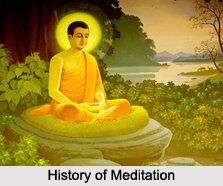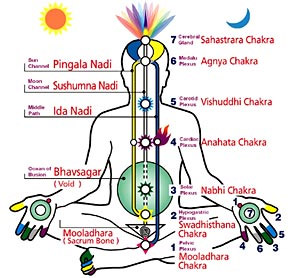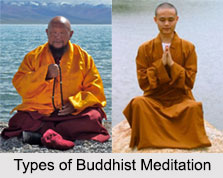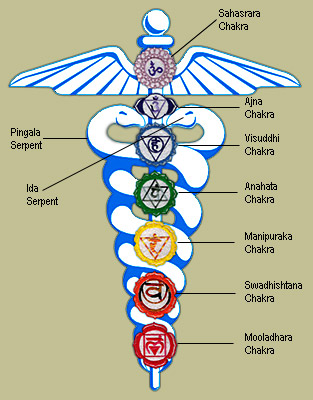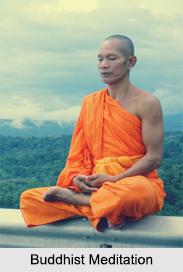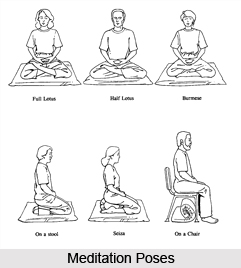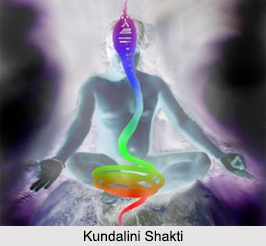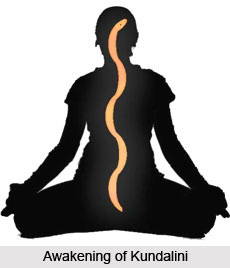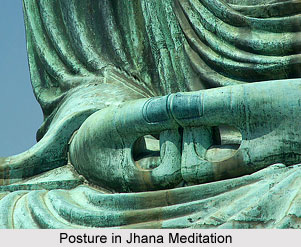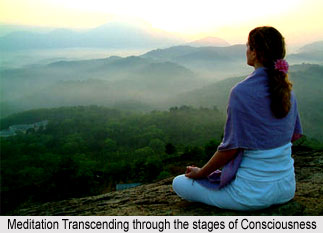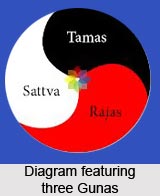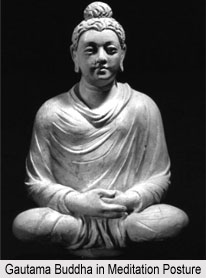 Meditation is a continuous process, a stage of high energy and a phase of intense awareness. Meditation raises one above both the dreamy sub consciousness and the restless conscious mind whilst bringing one in touch with the super conscious state. It is a typical state where the mind is astutely aware and intuitively certain. The idea of meditation is to relax so deeply that one becomes unable to internalize the energy of the senses. It is amidst the various stages of meditation the mind becomes focused and a tremendous flow of energy is awakened. That intense energy lifts the meditator into the level of super consciousness, where the intuitive powers are wholly awake.
Meditation is a continuous process, a stage of high energy and a phase of intense awareness. Meditation raises one above both the dreamy sub consciousness and the restless conscious mind whilst bringing one in touch with the super conscious state. It is a typical state where the mind is astutely aware and intuitively certain. The idea of meditation is to relax so deeply that one becomes unable to internalize the energy of the senses. It is amidst the various stages of meditation the mind becomes focused and a tremendous flow of energy is awakened. That intense energy lifts the meditator into the level of super consciousness, where the intuitive powers are wholly awake.
The continuous process of meditation thus can be best comprehended amidst three stages like, relaxation, exteriorization and finally through the expansion of the mind.
Thus in a rather simple way the stages of meditation can be described as
* Relaxation: Relaxing the body and the mind
* Interiorization: Interiorization is the idea to turn inside. It is a journey to rediscover one`s own self.
* Expansion: Expanding the sense of identity until the person who is meditating realizes the unity with all creation.
Relaxation is the first stage of meditation. The meditator need to completely relax whilst shutting down his senses. Relaxation is a result of withdrawing tension and energy from any area. Keeping the body relaxed and motionless while meditating is indeed the first stage towards the profound state of consciousness. After the relaxation of the body, relaxing the mind is important as overcoming the mental restlessness is the biggest challenge in meditation. The way to overcome mental restlessness is through concentration. Quite ideally therefore learning the art of concentration before embarking on meditation is indeed necessary. There are a number of exercises often in the introductory meditation classes which are known as the concentration exercises. These exercises help to teach the art of quieting the mind whilst bringing the multiplicity of thoughts buzzing around the minds, focusing on the object of concentration. It is through concentration, the second stage of meditation i.e interiorization can be achieved.
 Interiorization is the process of turning inside and is indeed one of the major stages of meditation as meditation is reckoned as the journey to the center of the inner self. Interiorization can only begin when one withdraws the attention from the outer world and turns it inside. It is certainly not an overstatement to say here that this stage of meditation complements with the first stage as it is by deep relaxation one can keep the body still for meditation. The science of yoga has long established the fact that breathing exercises can actually exert powerful influence on the mind whilst aiding to focus on the inner self. There are a wide variety of breathing techniques, known as `pranayama` which supports in controlling the "subtle energy" whilst aiding the mind to journey to the inner self for greater knowledge. Furthermore, visualization, prayer and chanting are the three ways which are also believed to support to focus the mind whilst directing it toward spirit, the super consciousness. Visualization, prayer and chanting each work with a different function of the mind and while done properly each can aid in connecting the self to the super consciousness.
Interiorization is the process of turning inside and is indeed one of the major stages of meditation as meditation is reckoned as the journey to the center of the inner self. Interiorization can only begin when one withdraws the attention from the outer world and turns it inside. It is certainly not an overstatement to say here that this stage of meditation complements with the first stage as it is by deep relaxation one can keep the body still for meditation. The science of yoga has long established the fact that breathing exercises can actually exert powerful influence on the mind whilst aiding to focus on the inner self. There are a wide variety of breathing techniques, known as `pranayama` which supports in controlling the "subtle energy" whilst aiding the mind to journey to the inner self for greater knowledge. Furthermore, visualization, prayer and chanting are the three ways which are also believed to support to focus the mind whilst directing it toward spirit, the super consciousness. Visualization, prayer and chanting each work with a different function of the mind and while done properly each can aid in connecting the self to the super consciousness.
In meditation one achieve to a particular state of consciousness where the mind is calm, focused and expansive. To achieve that state where the mind is expanded is the objective of the third stage of meditation. Expanding the mind is thus the idea of elaborating the sense of identity to such an extent where the person realizes an eternal unity with all creation. The stages like relaxation and Interiorization are indeed the necessary preparation for the final stage of meditation. This is the highest stage of meditation and is composed of three increasingly deep steps. In Sanskrit these stages are known as "Dharana". "Dhyana" and "Samadhi". Expansion or the third stage of meditation thus comes when the preceding two stages like relaxation and interiorization are complete. Expansion is nothing but the memory of bliss. It is the stage where the meditator feels an expanded sense of self. According to Yogananda, this is the sign of feeling the Omnipresence of the Omnipotent. From this third stage of meditation comes an inner communication with God. The mind expands, the spirit expands and what one feels is an eternal and deep connection to all life.
Meditation is the continuous process of self realization and the ultimate process of unification with the Infinite. Patanjali, the great sage of yoga defined this union with the infinite as "Smriti" or memory. It is only after calming down the turbulence of the conscious and the sun conscious mind this union can be achieved; and one can reach the central reality, the super consciousness. It is amidst the stages of meditation the mind can be relaxed, focused and then uplifted to perceive the reality through pure intuition.

